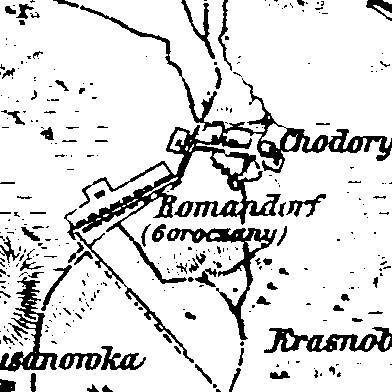
Romansdorf from 1855 to 1875

Romansdorf (Slavic name Doliwa) was founded in 1855. It is a street village (strassendorf) that once housed about 80 families, most German. A strassendorf is built along a road with houses on small plots of land neatly placed alongside both sides of the road. The fields surround the village.
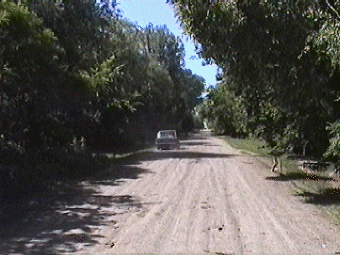
Romansdorf was a rich village; the land is flat and has good black soil. The initial occupants were given 20-year contracts on the land; this meant there was a large in and out migration when the 20-year contract expired in 1875.
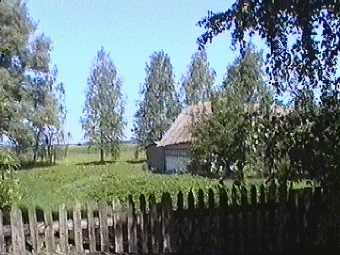
The village is nearer to Kiev, Ukraine than to Zhitomir, Ukraine. So the church book (Kirchenbuch) records are in Kiev Parish and not in Zhitomir Parish. These records are for the most part available through the microfilms kept by the Mormons. The few missing years are available in the Kiev Archives.
The initial settlers were tuchmacher (cloth makers) such as the great-great-great-grandfather Christian Hoffmann and the Andreas Spitzer family that arrived in Volhynia in the 1830's; they were largely from the Faustendorf and Alt Sapust areas. The reasons for the move can only be conjectured but here are some reasonable possibilities:
In any case, the new village was quickly populated and the residents enjoyed a high standard of village life. In the Mennonite Encyclopedia, Busch lists Romansdorf as having 143 adherents (Lutherans) with 26 school children in 1859.
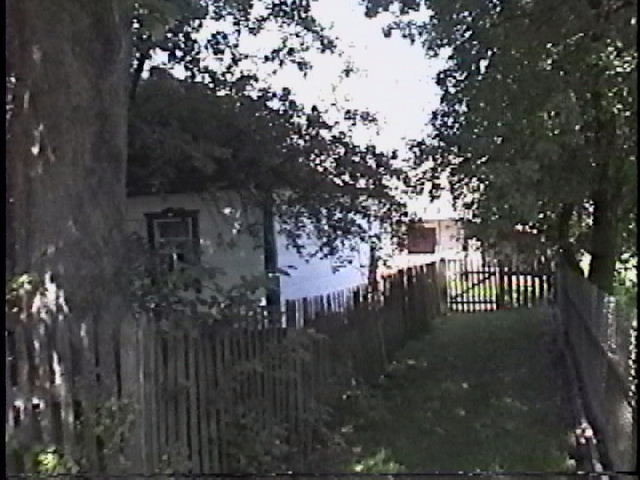
As 1865 approached Romansdorf was at its maximum capacity and people began to settle in nearby villages such as Ludwigsdorf and Malin. Later in 1875 the 20-year land contracts in Romansdorf had run their course. For that reason there was a major movement out of Romansdorf in 1875 to Grunwald and Ludwigsdorf. The best feature of Grunwald (Slavic name Dibrowa) was that good farming land could be purchased in that village. For pictures of Grunwald click on
Grunwald Gallery; for pictures of Ludwigsdorf click Ludwigsdorf Gallery. Particularly the Hoffmanns, Lehmanns, and some Spitzers moved to Grunwald. See the below map for all three of the aforementioned villages.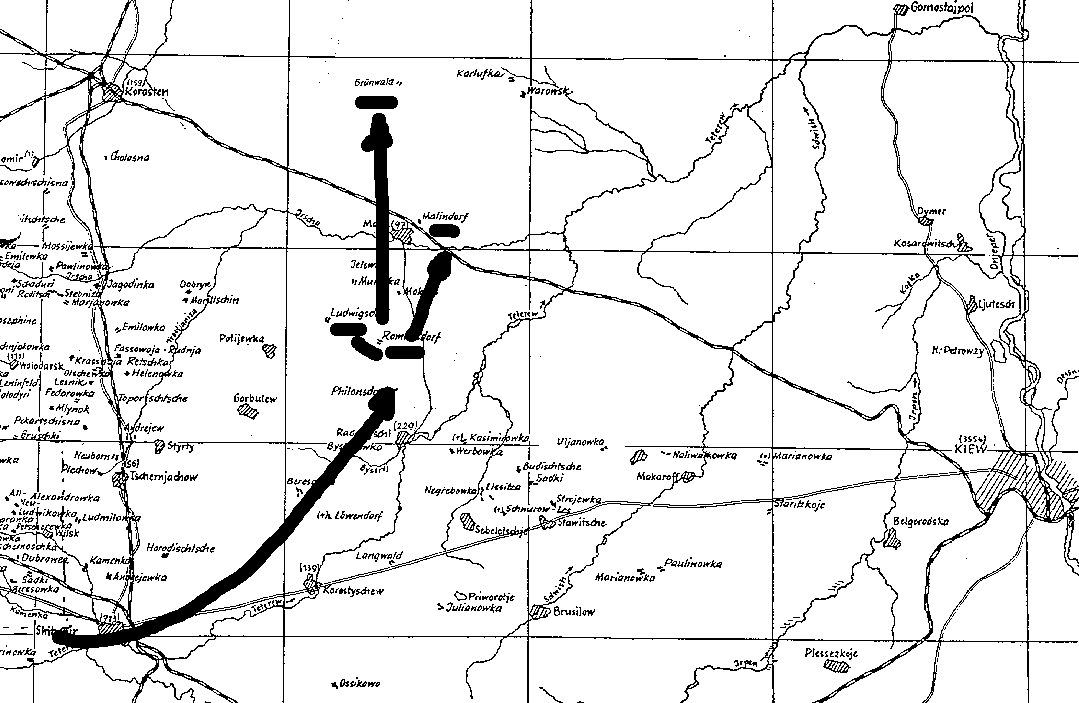
Hard to Read the Map?
Click here for the Adobe Acrobat Version.
Following is information on each family found in Romansdorf during 1855 to 1875. In many cases the family information includes family members before and after residency in Romansdorf, for example, births in Faustindorf, Alt Sapust, Grunwald and in the Americas. I will first present the biggest families in the village and then present the other families.
The Biggest Families in the Village
Hoffmann
The Hoffmann family came from
Krolikow, Gruziec, Poland and then from Stanislowow Studinski near Rawa, Poland ending up in 1835 in Volhynia; they were tuchmachers (cloth makers). The Hoffmans settled in Faustindorf in 1836. The land was sandy and alkaline allowing the growing of flax. Faustindorf was also near a swampy area useful in extracting the linen fibers from the flax stem. The patriarch was great-great-great-grandfather Andreas Hoffmann who was likely recruited by the Prussians about 1794 to settle in Poland following the third partition of Poland; the family was originally from Saxony. His children were born in Stanislowow and Faustindorf and grandchildren in Romansdorf. Click Family Tree for more family information from Christian to date (The Hoffmanns now mostly live in Arkansas, Wisconsin, Michigan, and Canada). The standard American spelling is Hoffman; I use this spelling in the genealogy data.Spitzer
The Spitzer family was recruited by the Prussians to settle Poland following the third partition of Poland in 1794. The first records showing them just south of Thorn in Poland in Radziejow. They moved aroudn villages near Sampolno in Russian Poland prior to moving to Volhynia in 1835 with the Hoffmanns. They too were tuchmachers (cloth makers) in Faustindorf (and nearby Stanislowa). The patriarch was Andreas Spitzer. His children were born in Faustindorf and grandchildren largely in Romansdorf. Click
Family Tree for more information from Andreas to date. (The Spitzers now mostly live in Arkansas, Wisconsin, North Dakota and Michigan). There were lots of Spitzers in the Romansdorf area. Early on they married the daughters of Johan Martin Will from near Posen so the Will family is also in the early records.Reiser
The Reiser family can be tracked back to villages near Stuttgart in Wurtemburg; this family can be traced back to before 1700. They moved in Russian Poland around 1800 and then moved to Volhynia with the Hoffmanns in 1835. They too were tuchmachers (cloth makers) in Faustindorf (and nearby Stanislowa). The patriarch was Jacob Reiser. His children were born in Faustindorf and grandchildren largely in Romansdorf. Jacob of the village stand-in for the Lutheran Pastor; in particular he baptized many of the newborn children in Faustindorf and later Romansdorf. His sister Juliana lived in the Alt Sapust area and was a midwife. Click
Family Tree for more information from Jacob to date. (The families of the daughters of Jacob Reiser settled in Ottenheim, KY).Lehmann
The Lehmann family first appears in Volhynian records with the 1835 birth of Johan Gottlieb Lehmann in Olganowka near Alt Sapust/Alt Dubisch/Tarnawola. It is not proven yet where they came from but the Saxony area is likely. Carl Lehmann is described in the 1836 Kirchenbuch as a
master weaver so the family was also in the cloth trade. The family patriarch is Johan Lehmann. Johan's son Johan Gottlieb was born in Olganowka, Volhynia; Johan's daughter Louise was married to the aforementioned Christian Hoffman's son Samuel. Thus Louis Hoffmann nee Lehman is my great-great-grandmother. My great-great-great-grandfather Johan Gottlieb Lehmann and his wife Louise's children were born in the Romansdorf and Grunwald areas. Click Family Tree for a family tree from Johan to date. (The Lehmanns now mostly live in Arkansas and Wisconsin). They spoke Low German. The standard American spelling is Lehman; I use this spelling in the genealogy data.Krassins
The Krassin family first appeared in 1836 the Alt Sapust/Alt Dubisch/Tarnawola area of Volhynia. The family patriarch is Johan Krassin, father of Martin Krassin, who was originally born in 1782 in Schokken, a noted cloth maker village near Posen. Here is a
Family Tree for the Martin Krassin family. There are two Krassins who may also have been Martin's kids, click on Justina Krassin who married Johan Minge's son and Johan Krassin who married Christina Minge to see a family tree for their families. (The Krasins now mostly live in Arkansas and Wisconsin). The standard American spelling is Krasin; I use this spelling in the genealogy data.Kurtz
The Kurtz family first appeared in the 1850's in the Alt Sapust/Alt Dubisch/Tarnawola area of Volhynia; these villages are suitable for flax so it is likely they were tuchmachers (cloth makers). There seem to be two family patriarchs. Gottfried Kurtz was born in the Lincowitz area of Poland. Click on
Family Tree to see more on the Gottfried Kurtz family. Daniel Kurtz was in another family patriarch; he was also born in Poland. Click on Family Tree to see more on the Daniel Kurtz family. Some of the members of both families later moved to Romansdorf and nearby villages like Ludwigsdorf. (The Kurtzes I know about now mostly live in Michigan).Minges
The Minge family first appears in Sobieski, Iwanonwiez, Kalisch about 1809. It is likely that this family was recruited by the Prussians for Sobieski around 1794 after the third partition of Poland. The family appears in the Alt Sapust/Alt Dubisch/Tarnawola area of Volhynia about 1840. Click on
Family Tree to see more about the Johan Minge family. There is also a Christina Minge who married Johan Krassin in Romansdorf, which is noted above.Radkes
The Radke family first appeared in the 1850's in the Alt Sapust/Alt Dubisch/Tarnawola area of Volhynia. The family patriarch is Gottlieb Radke; his kids were born in the Shieradz area of Poland, his grand children in Alt Sapust/Alt Dubisch/Tarnawola, and some of his great grand children in Romansdorf. This family also was originally cloth makers.
Gottlied Radke's grand daughter Augusta Radke married great-grandfather Ludwig Hoffman. So Augusta Radke is my great-grandmother and Gottlieb Radke is my great-great-great-grandfather. Click on Family Tree for more details; this family tree includes numerous Wessalowskis. (The Radkes I am familiar with now mostly live in Michigan).Other Families in Romansdorf
Other families in Romansdorf include the Quast, Luning, Henkel, Jesswein, Weich, Gitzel, and Wegner families and are listed below in alphabetical order. The clickable family segments and other unlinked members of these families who lived in Romansdorf are in the
Loose Ends file. There are so many details here that some are likely to be wrong. Also family trees only cover well the information from 1855 to 1875 in Romansdorf. So if you find an error or are willing to provide more details, do email me.Please send any information and queries to Bill Remus at
Gottlieb Fietz family and the Johan Fietz family; the latter family immigrated to Gilett, Arkansas.
Georg Gitzel family and Johan Gitzel family.
Gottlieb Glaser family.
Gottlieb Henkel family and three! Martin Henkel families (click Martin Henkel, Martin Henkel or Martin Henkel for details).
Christoph Jesswein family and Johan Jesswein family.
Gottlieb Klukas family.
Carl Lenz family.
Gottlieb Luning family (also spelled Lunning and Liening).
Friedrich Neumann family.
Christian Quast family, Gottfried Quast family, and Gottlieb Quast family.
Gottlieb Reimann family tree.
Martin Reschke family.
Friedrich Rosentreter family.
August Rudlaff Family Tree. (They immigrated to Berrien County, Michigan). The Rudlaff family was originally from Alt Colziglow in Kries Rummelsburg in Pommerania.
Christoph Wegner family and Johan Wegner family.
Friedrich Weich family.
Gottfried Wittlief family and Micheal Wittlief family.
Romansdorf post 1875
The 1880's brought repressive policies by the Russians. All people were required to learn Russian, join the Orthodox Church, and all young men serve in the Russian Army. This set off massive migrations to the Americas including not only Germans but also Ukrainians and Jews. Click on Passenger Lists for some of the travel information about the Hoffmann, Lehmann, Spitzer, and related families. Having proper identification in order to migrate was a problem for Germans in Russia. To aid them the Lutheran pastors made up birth certificates (there never were any official certificates). Here is a copy of a "birth certificate" that helped Julius Krassin to make his way to America.
The family of Wilhelm Otto and Caroline Spitzer was the first of these families to leave for America. They arrived in New York City in 1884 and purchased land in Ottenheim Kentucky from Lincoln Land Company in New York (owned by Jacob Ottenheim). They settled in Ottenheim soon thereafter. They assisted the departure of the much larger family group in 1892; this group landed at Baltimore and went immediately to visit their cousins in Ottenheim. Several of the families settled in Ottenheim but others went to Wisconsin, Michigan, and Arkansas. For more details, click on the Immigration Story of the Wilhelm Otto Family, the Immigration of the Johan Lehmann Family, or Pictures from Ottenheim. These are very interesting stories and well worth the read.
It is a good thing that most people got out then. Germans living in Russia were sent to Siberia when World War I pitted the Germany against Russia. Many died; those that survived left for America although some resettled in Russia. In 1929 Stalin tried to collectivize all Russia including Romansdorf and Grunwald. Those resisting, including Germans, were killed. Collectivization still didn't work so in 1933 Stalin set off a great starvation in the Ukraine killing many; Julius Krassin and wife Anna Elisabeth Quast were starved to death in Romansdorf in 1933. In 1937 killings related to the Stalin purges occurred; 46 people were killed in Romansdorf including Julius and Anna Elisabeth Krassin's son Adoph Krassin. In 1939 many Germans were again sent to Siberia; only three families returned and all later left for the west. Paul Klukas was one of those people; we saw the land he sold to a current resident. My great-great-grandfather Samuel Hoffman's son Heinrich Reinhold Hoffman also died in the foregoing holocaust although it is not clear when this happened.
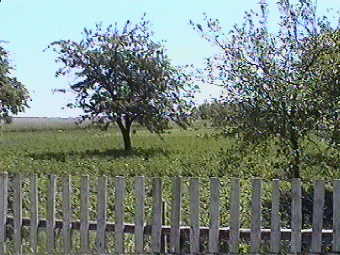
The village of Romansdorf was totally destroyed in the Second World War. First the Russians built trenches using material from the village and a battle was fought there. Then the Nazi's did the same when retreating from their defeat in Stalingrad. All buildings in the village now are post-war. There are no remnants of the German villages and only a few remaining graves. As of 2000, the young people have all gone to the big Ukrainian cities like Kiev leaving Romansdorf and Grunwald to the old timers.
The Romansdorf cemetery contains only one German grave monument; it is on the grave of Julius Krassin and wife Anna Elisabeth Quast who were starved to death in 1933. The monument has a bullet mark on the back. Here are the pictures:
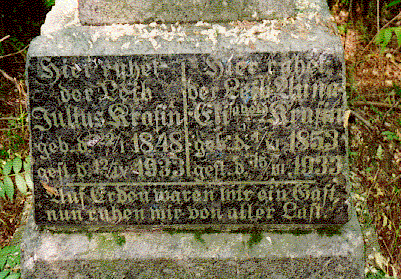
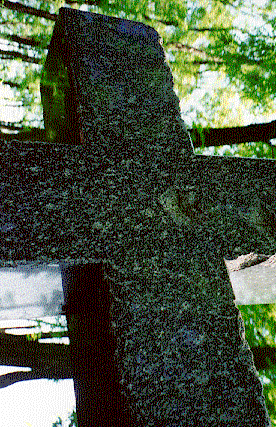
Grunwald has only a grave monument from the Theophil family.
Both Romansdorf and Grunwald were turned into collective farms.
Grunwald Gallery contains pictures of the farmland and the out buildings of the now derelict Grunwald collective farm.
Thank God our ancestors got out.
Please send any information and queries to Bill Remus at
Updated on September 13, 2011.